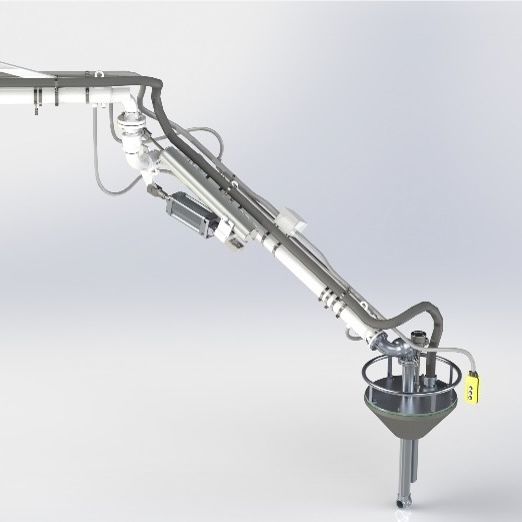01/08/2024
LOADING SOLUTION FOR MODIFIED BITUMEN
CHALLENGE
A client involved in the supply of modified bitumen for road surfaces highlighted the need for a loading solution for tank trucks that minimized bitumen vapor emissions. The client was unable to meet environmental parameters set by ARPA - Regional Environmental Protection Agency - causing inconvenience to local residents due to strong odors.
INITIAL INSPECTION AND ANALYSIS
During the first inspection, it was observed that the loading process was carried out using a rigid pipe with limited rotation, and the hood positioned above the tank nozzle to extract the vapors was ineffective. Dimensional surveys were conducted to better understand the client's specific needs.
PROPOSED SOLUTION
Silea Liquid Transfer proposed installing a 1201 model loading arm with oil- recirculating jacketed pipes and an RV cone to minimize vapor dispersion. Later on, the client requested additional modifications, leading to the design of a heating tracing arm and a dedicated standpost, due to the absence of a platform in the plant.
DEVELOPMENT AND IMPLEMENTATION
After the project approval, a second site visit was conducted for more precise measurements and additional operational details. Silea provided the client with detailed information on the weights and forces involved to construct a specific plinth to support the arm and standpost. Once the equipment was delivered, a date for start-up and testing was set, with the electrical parts of the arm connected to the client's system.
RESULTS
During the testing phase, a noticeable amount of vapor initially escaped from the manhole, but this quickly decreased and ceased entirely within about twenty seconds. This initial vapor dispersion, which then stops during the entire loading process lasting approximately 40-45 minutes, was deemed acceptable by the client. One year after installation, the client is fully satisfied with Silea Liquid Transfer’s solution: the loading station now operates flawlessly at full capacity.






.jpg)
